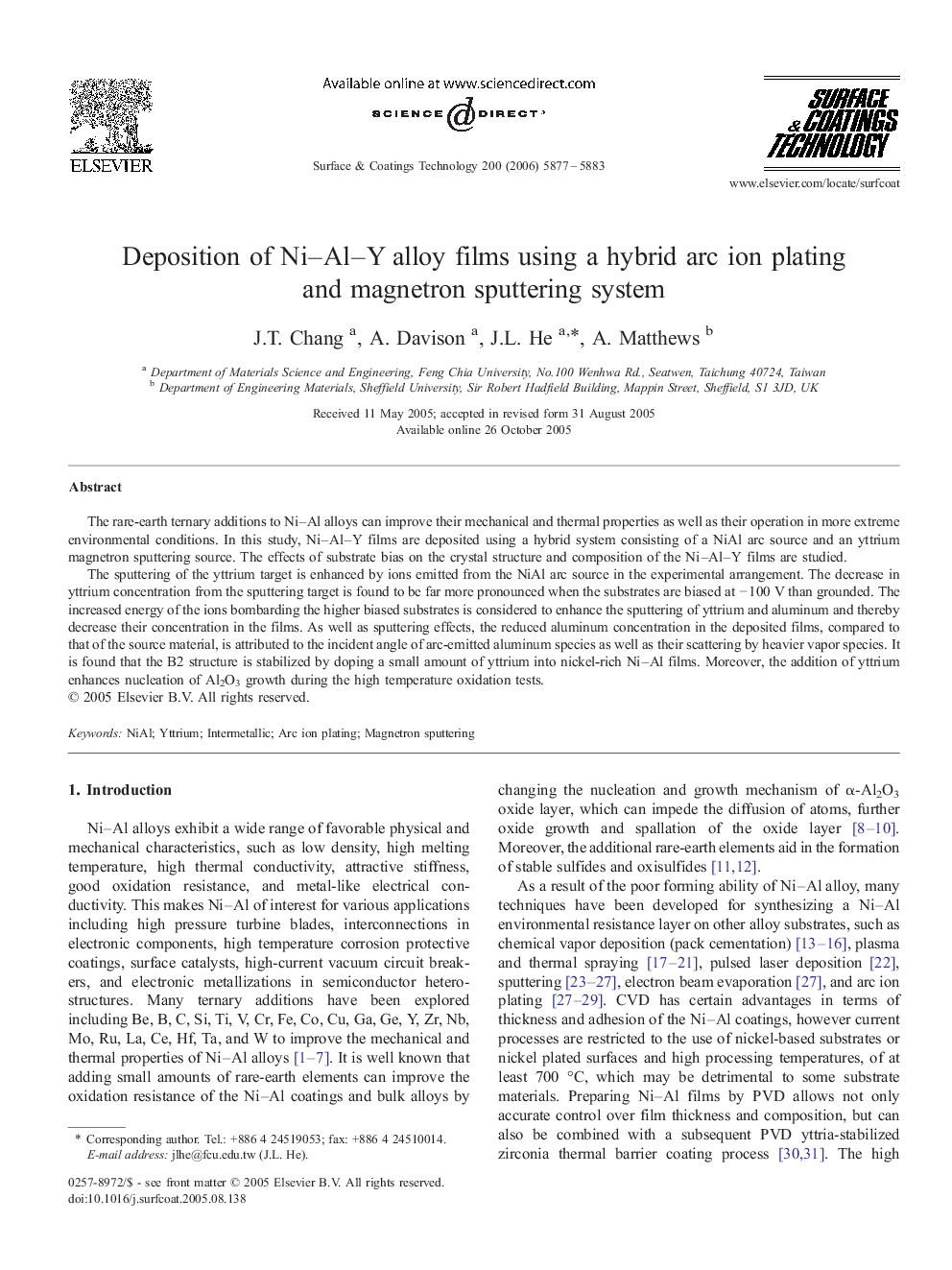| Article ID | Journal | Published Year | Pages | File Type |
|---|---|---|---|---|
| 1662209 | Surface and Coatings Technology | 2006 | 7 Pages |
The rare-earth ternary additions to Ni–Al alloys can improve their mechanical and thermal properties as well as their operation in more extreme environmental conditions. In this study, Ni–Al–Y films are deposited using a hybrid system consisting of a NiAl arc source and an yttrium magnetron sputtering source. The effects of substrate bias on the crystal structure and composition of the Ni–Al–Y films are studied.The sputtering of the yttrium target is enhanced by ions emitted from the NiAl arc source in the experimental arrangement. The decrease in yttrium concentration from the sputtering target is found to be far more pronounced when the substrates are biased at − 100 V than grounded. The increased energy of the ions bombarding the higher biased substrates is considered to enhance the sputtering of yttrium and aluminum and thereby decrease their concentration in the films. As well as sputtering effects, the reduced aluminum concentration in the deposited films, compared to that of the source material, is attributed to the incident angle of arc-emitted aluminum species as well as their scattering by heavier vapor species. It is found that the B2 structure is stabilized by doping a small amount of yttrium into nickel-rich Ni–Al films. Moreover, the addition of yttrium enhances nucleation of Al2O3 growth during the high temperature oxidation tests.
